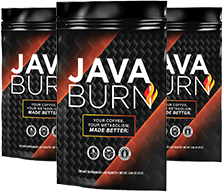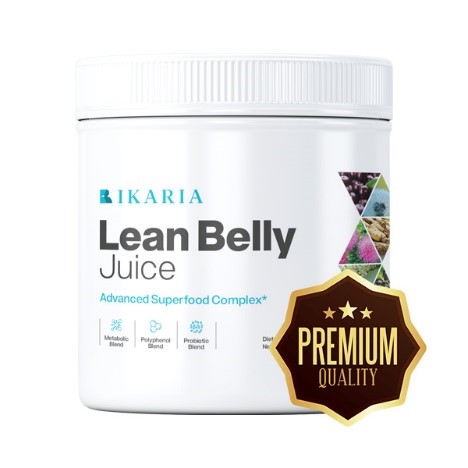No guardian is totally ready for what comes out of their baby’s backside. Baby poop has a unique shade, texture and scent that you just is likely to be used to. It additionally modifications over time.
In the first few months, a baby’s eating regimen is proscribed to system or breast milk as their digestive system continues to be creating. You’ll doubtless watch them wiggle, scrunch and use their complete body in the pooping course of, too. But as soon as they start to drink extra milk and ultimately eat solids, the shade, texture and frequency of their soiled diapers will change. And all this may make it tough so that you can know what’s normal and when try to be involved about your baby’s poop.
Here’s our recommendation for brand spanking new mothers, dads and caregivers about what will be healthy baby poop, the way to know if baby is pooping sufficient and when to get recommendation out of your baby’s physician or a nurse.
Your baby’s first poops: What to anticipate for the first week
Your new child baby’s poop could be a main shock should you’re not ready for it.
Meconium: Blackish, tarry stools that final for as much as three days
Your baby’s first poops are meconium and possibly don’t seem like something you’ve seen earlier than. Meconium is a sticky, greenish-black, tar-like substance that traces your baby’s intestines earlier than delivery. Meconium is a mix of amniotic fluid, pores and skin cells, water, bile and secretions from the intestinal glands.
Most infants have their first bowel motion inside a couple of hours of being born, however some infants might poop simply earlier than delivery. For the first three days of their life, your baby ought to have one soiled diaper for every day of their life. If your baby is making fewer soiled diapers than that, or their poop continues to be black three days after delivery, it might be an indication they’re not getting sufficient to eat.
If you may have questions on your baby’s poop or aren’t positive should you ought to see a health care provider simply but, name your clinic’s nurse line. Or you may go forward and make an appointment along with your baby’s physician.
Transitional stool: Your baby’s poop will undergo modifications for a couple of days
It will take a couple of days in your baby to utterly clear the meconium from their body, and for breast milk or system to make its approach via your baby’s digestive system. So, there will likely be a transition interval earlier than your baby’s poop turns into a extra constant shade and texture. During this time, you may even see darkish brown poop, adopted by mushy greenish poop after which thinner yellowish poop.
By the time your baby is a couple of week outdated, they need to be making “normal baby poop” – which is normally mustard yellow for breastfed or chest fed infants, and a yellow brown for formula-fed infants.
Your baby’s poop as they develop: Normal colours and textures
Healthy baby poop colours and textures will be very totally different than healthy poop for adults. While you’d be stunned if lemon-yellow or greenish-tan stool got here out of you, these are a few of the healthiest forms of baby poop.
Healthy poop colours and textures are totally different for infants primarily fed breast milk and people largely fed system. Once your baby begins to snack on solids (someday between 4-6 months outdated) you may anticipate finding extra modifications of their diapers.
Normal poop for breast milk-fed infants
Before beginning any strong meals, infants who primarily drink breast milk normally have mustard yellow poop that’s unfastened and seedy. You can also see brilliant yellow or orange poop – these colours will be brought on by the drugs and eating regimen of the breastfeeding or lactating guardian.
Before they’re 6 weeks outdated, your baby might poop after each feeding. After that, one to 3 occasions a day is typical. But it may also be widespread for some breast milk-fed infants to poop greater than 3 times a day or for them to go a couple of days, or perhaps a week, between bowel actions.
Normal poop for formula-fed infants
Before formula-fed infants start eating solids, their poop is usually yellow-brown or greenish-tan as soon as their digestive system is up and running, and the poop is a bit firmer in consistency. It’s additionally doable for the iron in baby system to trigger darkish inexperienced poop, which is not any motive for concern.
Newborns consuming system will usually poop after almost each feeding. Once a formula-fed baby is 6 weeks outdated, you may anticipate one or two poopy diapers every day.
Since infants’ digestive programs are so younger and delicate, some infants will be illiberal of sure forms of system. Gas, bloating, constipation or diarrhea will be indicators of a system intolerance, so discuss along with your baby’s physician when you’ve got any issues.
Normal poop for infants as soon as they start eating strong meals
Once your baby begins to eat solids, healthy micro organism will start to populate their intestines, leading to poop that begins to look (and scent) a bit of extra like yours. Their poop will develop into thicker and darker – and most of the time will likely be brown.
But since baby’s digestive system continues to be creating, a baby’s poop is extra more likely to tackle the shade of the meals they ate, inflicting poop that may look considerably inexperienced, orange, yellow or pink. You can also see chunks of food of their poop.
Babies who eat solids normally poop one or two occasions a day. But it’s widespread for infants to get bouts of constipation as they’re transitioning to a strong eating regimen.
Even should you see one thing uncommon in your baby’s diaper, chances are high that it’s nothing to fret about. But if modifications in the shade, texture or frequency of your baby’s poops are accompanied by different signs corresponding to fever, fussiness or not eating properly, it may very well be an indication of sickness or an underlying situation.
Very runny or watery baby poop
Poop that’s a bit of runny is fairly normal for infants earlier than they start eating solids – and in the case of breast milk-fed infants, healthy poop is a bit watery to start with. But a sudden enhance in the variety of poops or looseness of the poop could be a signal of diarrhea.
If your baby doesn’t have a fever and is in any other case appearing normal, however you observed diarrhea, a great first step will be to name your clinic’s nurse line. But should you’re noticing different signs like fever, give your baby’s physician a name or make an appointment.
Dry, pebbly poop
If you’re discovering small, darkish brown pellets in your baby’s diaper, they might be constipated. You can also discover an extended time period between their final poop, see them straining as they push or discover that poop pebbles have some pink on or in it.
Constipation will be extraordinarily widespread in infants, particularly as they start to eat totally different strong meals or start transitioning to cow’s milk from system or breast milk. In some instances, it may be one signal of dehydration, however constipation normally isn’t critical and doesn’t require a health care provider’s go to. However, in case your baby hasn’t had a bowel motion in additional than three days, it’s a good suggestion to name your baby’s physician or make an appointment.
Black baby poop
While baby’s very first poops are black and tarry, black poop will not be widespread in older infants. However, iron in system or iron dietary supplements given to sure infants, in addition to meals like blueberries and grape juice, could make poop look blackish.
But accompanied with different signs like fever or fussiness, black poop may also be an indication of bleeding in baby’s digestive tract and it’s a great time to get in contact along with your physician.
Red baby poop
Like black stools, pink baby poop may also be brought on by sure meals, in addition to from constipation or diaper rash. However, pink or bloody baby stools alongside different signs might sign an an infection, allergy symptoms or one other situation. So, it’s a good suggestion to provide your baby’s physician a name. If you discover a big quantity of blood in your baby’s diaper, head to your nearest emergency room.
Gray or white baby poop
Chalky white or grey baby poop is usually an indication of an underlying situation. So it’s beneficial that you just search speedy medical attention simply to be protected.
When to speak to a health care provider about your baby’s poop
Since a rainbow of colours and a variety of textures will be okay, how are you aware when your baby’s poop is trigger for concern? Generally, if modifications in your baby’s poops are additionally accompanied by different signs or modifications in conduct, it’s a good suggestion to see a health care provider.
Make an appointment in case your baby has any symptom like fever, elevated fussiness, problem eating or fatigue, in addition to:
- Your new child’s poop is black a number of days after delivery.
- Your baby’s poop seems brilliant pink or bloody.
- Your baby’s stool is a chalky white or pale grey.
- Your baby is pooping extra frequently, and their stool is unusually watery.
- Your baby is struggling to poop or making stools which are dry, exhausting or pebbly.
- Your baby is pooping much less frequently than normal or hasn’t had a bowel motion in additional than three days.
Get the scoop in your baby’s poop
Questions about your baby’s poop are at all times nice to deliver up at any of the well-baby visits you’ll have in the first a number of months of their life. And you may at all times name your clinic’s nurse line with questions. But should you’re noticing regarding signs, make an appointment along with your baby’s physician.
We know it may be difficult to explain poop modifications, so be happy to bag up the soiled diaper to deliver it alongside to your appointment.



















Discussion about this post